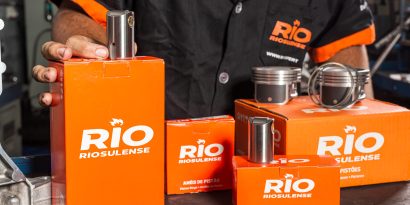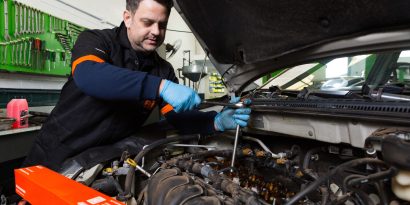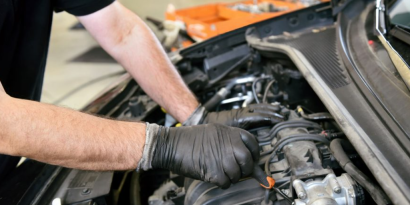When it comes to sealing and ensuring the efficient operation of an automotive engine, the Experts who follow RIO’s blog already know that head gaskets and oil pan gaskets play a fundamental role. These components, though small, are responsible for sealing different parts of the engine, preventing oil, coolant, and gas leaks.
However, it’s equally important to understand that, despite their similarities, head gaskets and oil pan gaskets serve distinct purposes. Moreover, they have significant differences in composition, application, and maintenance.
In today’s article, we’ll explore the key differences between head gaskets and oil pan gaskets, along with essential installation and maintenance tips to help technicians ensure quality and long-lasting repairs. Let’s dive in!
4 Key Differences Between Head Gaskets and Oil Pan Gaskets
Although both gaskets serve a sealing function, their applications and characteristics require different skills and care from the Expert. Here are the main differences:
1 – Location in the Engine
The head gasket is installed between the engine block and the cylinder head, sealing the combustion chambers as well as oil and coolant passages. In contrast, the oil pan gasket is located at the bottom of the engine, between the engine block and the oil pan, sealing the area where the oil is stored.
2 – Primary Function
The head gasket must withstand high pressures and temperatures generated during combustion, ensuring the perfect sealing of the combustion chamber. Meanwhile, the oil pan gasket is designed to prevent oil leaks and protect the lubrication system.
3 – Material Composition
Head gaskets are typically made from robust materials such as stainless steel or multi-layer composites to resist extreme engine conditions. Oil pan gaskets, on the other hand, are made from more flexible materials like rubber or cork, as they are less exposed to high temperatures and pressures.
4 – Installation Complexity
Installing a head gasket is more complex, requiring strict attention to bolt torque and proper alignment to avoid failures. Conversely, installing an oil pan gasket is simpler but still requires care to avoid deformation or leaks.
Essential Installation and Maintenance Tips for Head Gaskets and Oil Pan Gaskets
By now, it’s clear that working with automotive gaskets is not a one-size-fits-all process. Regardless of the component, following best practices for installation and maintenance is crucial to ensure optimal engine performance and avoid gasket failures.
Here are some practical tips to help streamline the repair process:
Always clean and inspect the gaskets: Before installation, ensure that the contact surfaces are clean, free of oil or dirt, and without deformations. This guarantees an efficient and secure seal.
Follow the manufacturer’s torque specifications: Use a torque wrench to tighten the bolts as specified by the manufacturer, especially when installing the head gasket. Incorrect torque can lead to leaks or damage.
Use gaskets made from the right materials: Always opt for high-quality gaskets, such as those provided by RIO. Inferior materials can compromise sealing and durability.
Perform preventive replacement: Replace gaskets during engine repairs, especially if there are signs of wear, such as leaks or deformations.
Avoid reusing gaskets: Do not reuse previously installed gaskets, as their sealing capability may be compromised.
Frequently Asked Questions
What is the primary function of a head gasket?
The head gasket seals the combustion chamber and the oil and coolant passages, withstanding high pressures and temperatures.
Can I reuse an oil pan gasket?
Reusing oil pan gaskets is not recommended. Used gaskets lose their sealing efficiency and may cause leaks.
What are the signs of a faulty head gasket?
Loss of power, engine overheating, and oil mixing with coolant are the primary signs of a failing head gasket.
Remember: High-Quality Gaskets Are from RIO!
Understanding the differences between head gaskets and oil pan gaskets is essential to ensure quality repairs and optimal engine performance. Each type of gasket plays a unique role and requires specific care during installation and maintenance to prevent leaks or sealing failures.
At RIO, we take pride in offering a complete portfolio of high-quality gaskets designed to meet the demands of modern engines. Whether replacing head gaskets or oil pan gaskets, count on the reliability and guarantee of RIO products to deliver excellent and safe repairs. After all, successful maintenance starts with the right parts.





